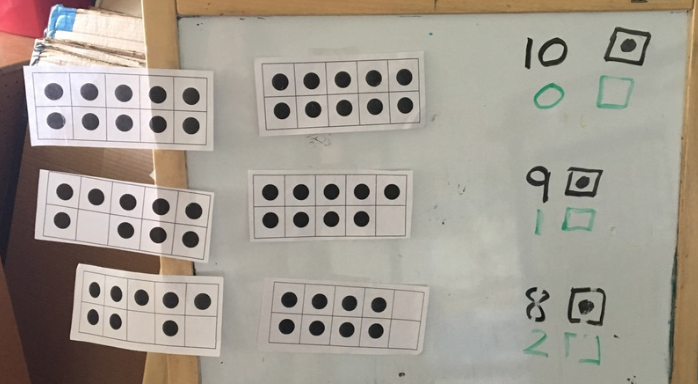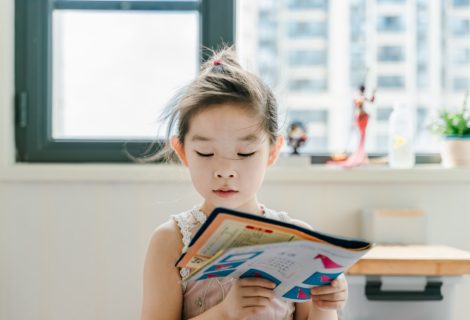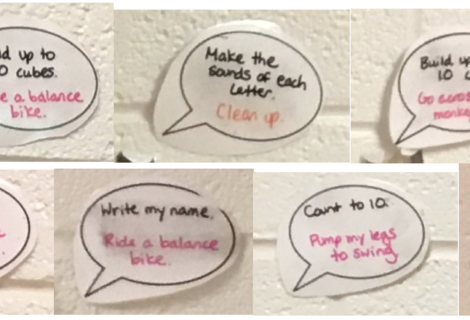A Year’s Worth of Learning Intentions & Success Criteria for Number Talks
Sometimes the idea of creating and communicating meaningful learning intentions and success criteria for every part of our instructional day is overwhelming.
From the moment learners enter our classroom door, they are engaged in intentional learning experiences. Some of these experiences are part of purposefully short, frequent tasks or routines that provide structure to meaningful, spaced practice, such as Number Talks, Quick Images, Which One Doesn’t Belong?, Counting Jars, Visual Estimation, and Notice and Wonder.
Creating and communicating meaningful learning intentions and success criteria for these routines can be daunting. It feels as though the learning intentions and success criteria could take up more time than the brief task itself. And planning 180 learning intentions and success criteria for short routines would be incredibly time-consuming.
On the other hand, we know communicating teacher clarity is pivotal to effective teaching (effect size = 0.75). We want learners to articulate what they are learning, why they are learning it, and how they will know when they are successful. An effective way to communicate teacher clarity is through learning intentions and success criteria. Learning intentions describe what we want our students to learn (effect size = 0.68) and success criteria specify the evidence learners will produce to show their progress toward mastering the learning intention (effect size 1.13). (Almarode, Fisher, Thunder, Hattie, & Fry, 2019)
So how do we efficiently and effectively create learning intentions and success criteria for math routines?
Our answer: Think big picture. Create year-long learning intentions and success criteria.
Rather than think about our learning goals for each day, week or unit’s Number Talks, we think about our learning goals for the whole year. We ask ourselves: By engaging in Number Talks multiple times each week, what are students learning? Why are they learning this? And how will they know when they are successful?
With the whole year in mind, we create three sets of learning intentions: content, language, and social learning intentions.
- Content Learning Intentions communicate the mathematical content of the learning or the mathematical “what”.
- Language Learning Intentions communicate the mathematical vocabulary and phrases students need to know to master the mathematical content.
- Social Learning Intentions communicate the social skills that foster effective collaboration and communication. Together, Language and Social Learning Intentions communicate the mathematical “why” or the mathematical practices and processes for learning the content.
To create our Content Learning Intentions, we focus on the four main purposes of our Number Talks throughout the year:
- growing fluency with part-part-whole relationships (We are learning to see combinations of __.),
- growing fluency with one/two/ten more or less (We are learning to see __ more and __ less.),
- subitizing (We are learning to see the quantity fast.), and
- developing number sense through benchmarks of five and ten (We are learning to see the largest group.).
To create our Language Learning Intentions, we examine the mathematical vocabulary learners need to transfer from Number Talks to other mathematical problem solving tasks. We ask ourselves, “What words are important for talking and thinking about the mathematical content?”
To create our Social Learning Intentions, we consider why we value this significant, yet brief, whole group instruction so much. We ask ourselves, “Why is it valuable for all of our students to work, think, and talk together as a math community in a Number Talk?” Again, we examine the social skills for collaboration and communication that learners need to transfer from Number Talks to other learning tasks.
Here are our learning intentions for a year of Number Talks in PreK and Kindergarten:
| Content Learning Intentions | We are learning to see combinations of __. We are learning to see __ more and __ less. We are learning to see the quantity fast. We are learning to see the largest group. |
| Language Learning Intentions | We are learning to describe combinations, how many more and less, groups, and values. We are learning to prove our reasoning using the words: parts, wholes, missing parts, empty spaces, groups, sets, values, and total. |
| Social Learning Intentions | We are learning to listen to, make connections to, and build on peers’ ideas. We are learning to respectfully agree and disagree. We are learning to use peers’ ideas to try new ways of thinking. |
Now, we can select one content, language, and social learning intention for each Number Talk and quickly create aligned success criteria. We vary our wording but keep the heart of the learning intentions and success criteria the same over time to help learners’ develop meaning through familiarity. We adjust the numbers, representations, tools, questions, and language frames to create novelty and engagement. And we keep it brief when we communicate the learning intentions and success criteria to learners so the learning task remains central.
Here are two examples:
Alisha’s Kindergarten class:
Alisha planned three Number Talks over the course of one week. The learning intention for all three Number Talks was, “We are learning to see combinations of 7.” The success criteria for the first Number Talk using ten-frames was, “I can share how my friend saw seven.” The second Number Talk used domino dot patterns and the success criteria was, “I can compare how our thoughts are the same and different.” And the final Number Talk of the week’s success criteria was, “I can use a friend’s strategy,” using rekenreks.
Kateri’s PreK class:
Kateri planned two Number Talks over the course of one week. The learning intention for both Number Talks was, “We are learning to identify how many dots by noticing how many are empty,” and “We are learning to listen to friends’ ideas.” The success criteria for both Number Talks was, “I can name the total dots by first looking at the empty spaces,” and “I can notice if I saw the same empty spaces as my friends.” For the first Number Talk, they used ten-frames with 0 and 1 empty spaces in different locations. For the second Number Talk, they again used ten-frames but with 0, 1, and 2 empty spaces in different locations.

As we begin thinking about how to use what we know about math routines in new learning settings – whether in-person, virtual, or hybrid, we know that communicating learning intentions and success criteria will remain a significant instructional practice. We believe relying on year-long learning intentions and success criteria for math routines will create a sense of continuity and purpose that will be imperative for us, our students, and their families.
For more about Math Routines and our work to prepare for teaching and learning in-person, virtually, and hybrid: Register for the 2020 Math+Literacy Summer Series Institute – a series of 4 webinars.
For more about communicating clarity in the early childhood mathematics classroom: Check out our guest blog for Corwin.


